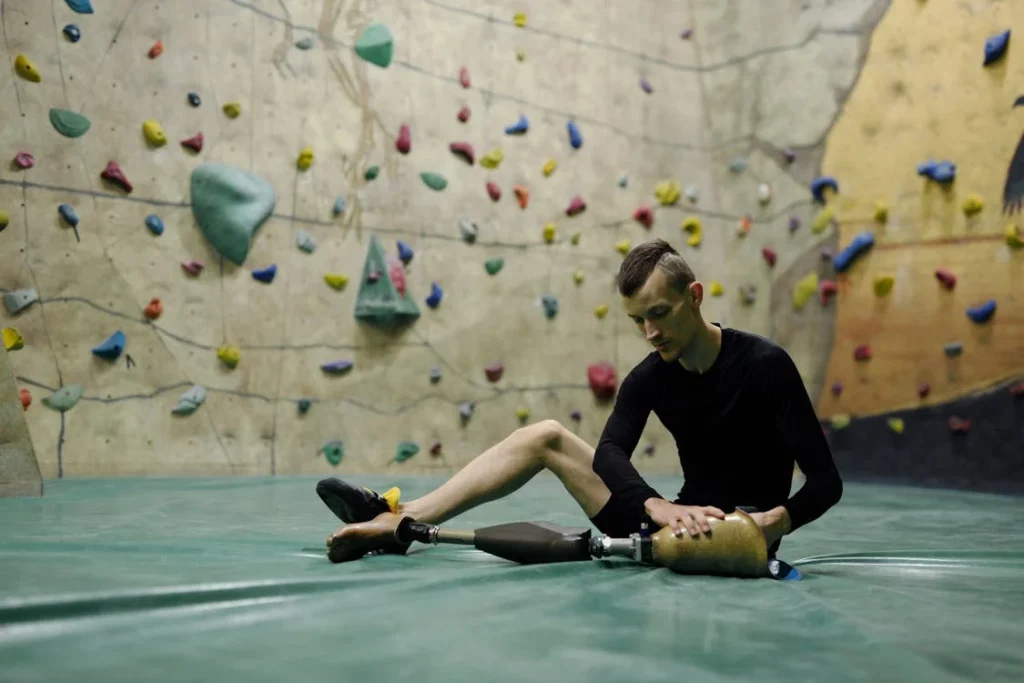Losing a limb is life-changing, and a hemipelvectomy—where part of the pelvis and leg is removed—brings unique challenges. But with the right prosthetic and approach, you can regain independence and live a fulfilling life.
A hemipelvectomy prosthetic is more than just a mobility aid—it’s a tool that helps you move confidently, perform daily tasks, and reclaim your routine. However, adapting to it takes patience, practice, and the right mindset. From learning how to walk again to managing comfort and maintaining balance, every step is an achievement.
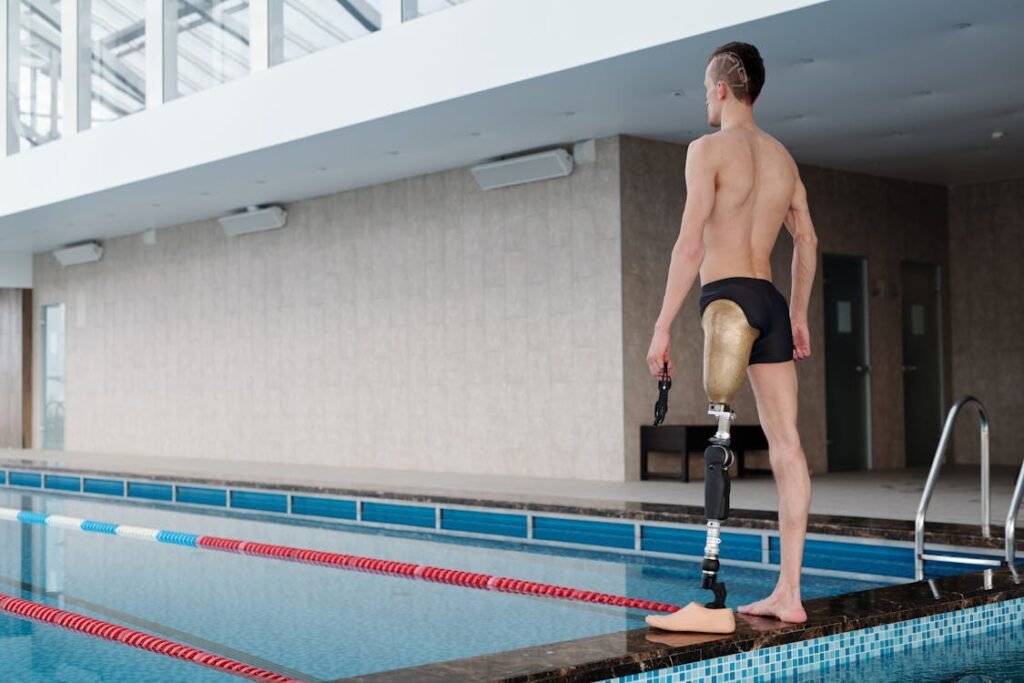
Getting Started with Your Hemipelvectomy Prosthetic
Adjusting to a hemipelvectomy prosthetic is a journey that requires patience and a structured approach. The first few weeks are crucial for building confidence, learning how to use the prosthetic properly, and developing a routine that works for you.
Understanding Your Prosthetic
A hemipelvectomy prosthetic is designed to replace not just the leg but also the missing part of the pelvis. This makes it different from most other prosthetics. It includes a custom-made socket that fits around your waist and torso, a mechanical hip joint, and an artificial leg that mimics natural movement.
Since this type of prosthetic must support your entire weight on one side, it takes time for your body to adjust. The first thing you’ll notice is that walking feels different. Unlike a natural leg, the prosthetic hip doesn’t have built-in muscle control. Instead, movement relies on shifting your weight and using your upper body to stabilize.
Your prosthetist will work with you to ensure a proper fit, but small adjustments may be needed as you get used to it. A well-fitted prosthetic reduces discomfort, improves mobility, and prevents skin irritation.
Building Strength and Balance
Walking with a hemipelvectomy prosthetic requires strong core muscles. Since you no longer have a natural hip joint, your lower back and abdominal muscles take on more responsibility. Strengthening these muscles will help you move with greater ease and reduce strain on your body.
Physical therapy plays a key role in building the strength you need. Simple exercises like seated core rotations, side bends, and controlled leg lifts can improve stability. Using parallel bars, walkers, or crutches in the beginning will also help you practice shifting weight properly.
Balance is another major factor. With a missing leg and pelvis, your body must adapt to a new center of gravity. Daily balance exercises, like standing on a single support or practicing controlled movements, will improve confidence.
Learning to Walk Again
Walking with a hemipelvectomy prosthetic is different from natural walking. Instead of bending your hip and knee in a natural stride, you’ll use your upper body and core to create motion. It may feel unnatural at first, but with practice, it becomes more fluid.
Your prosthetist and physical therapist will guide you through step-by-step training. The process typically starts with weight-shifting exercises before moving on to controlled steps. At first, you may need a walker or crutches to support yourself, but over time, you’ll gain more independence.
Patience is key. Every person adapts at their own pace, so it’s important to celebrate small progress. Walking short distances at home, focusing on posture, and practicing in front of a mirror can help refine your technique.
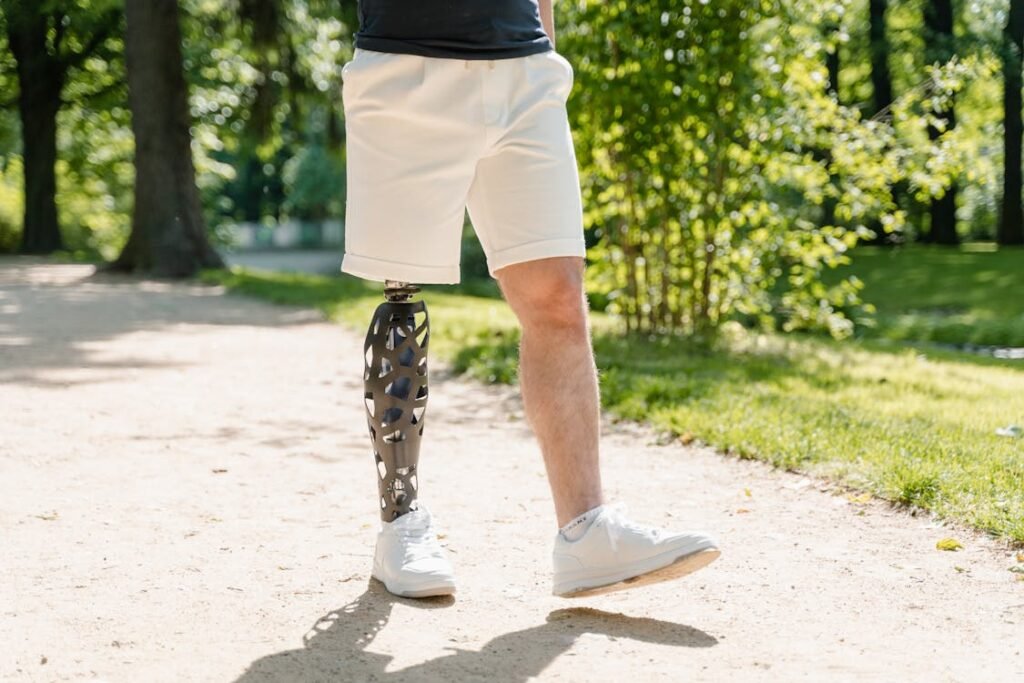
Adjusting to Daily Activities
Once you’ve started walking with your hemipelvectomy prosthetic, the next step is adapting to everyday activities. Simple tasks like sitting, standing, getting dressed, and using the bathroom may feel different, but with the right approach, they become second nature.
Sitting and Standing with Ease
Sitting with a hemipelvectomy prosthetic requires some adjustment because of the way the prosthetic socket fits around your waist and torso. A well-designed prosthetic allows you to sit comfortably, but you may need to adjust how you lower yourself into a chair.
When sitting down, approach the chair at a slight angle and use your hands for support. If the chair has armrests, they can help you lower yourself smoothly. Keeping your back straight will prevent unnecessary pressure on your lower spine.
Standing back up is also something you’ll need to practice. Since you don’t have a natural hip joint on one side, pushing up from a seated position requires more effort. Placing your weight on your stronger side and using your arms to push off will make standing easier.
Getting Dressed with a Prosthetic
Dressing with a hemipelvectomy prosthetic takes a little extra time in the beginning, but establishing a routine will make it easier. Loose-fitting clothing, elastic waistbands, and adaptive clothing options can simplify the process.
For pants, it’s often easier to sit while dressing. If your prosthetic is removable, putting on pants first and then attaching the prosthetic may be more convenient. If not, pulling fabric over the prosthetic leg carefully and using your hands to adjust the fit helps.
Shoes are another factor to consider. Since your prosthetic foot does not have sensation, choosing comfortable, supportive shoes will make walking easier. Slip-on shoes or those with Velcro fasteners are often more practical.
Using the Bathroom Comfortably
Adapting to bathroom routines may take a little practice, especially if you are new to wearing a prosthetic. If balance is a concern, grab bars near the toilet and shower can provide extra stability. Sitting down slowly and using armrests or a raised toilet seat can make things easier.
Showering with a prosthetic depends on whether yours is water-resistant. If it’s not, you may need to remove it before bathing. A shower chair can offer extra support, allowing you to sit while washing. Anti-slip mats and handheld showerheads can also improve safety.
Moving Around Your Home
Making small modifications to your living space can make daily life with a hemipelvectomy prosthetic more comfortable. Ensuring that furniture is arranged for easy movement, using non-slip rugs, and keeping frequently used items within reach will help prevent unnecessary strain.
Practicing movements in your home, such as walking through doorways, stepping onto rugs, and reaching for objects, will help you feel more comfortable navigating your space. Over time, these small adjustments will become part of your routine.

Navigating the Outside World
Once you’ve adjusted to daily activities at home, the next step is feeling confident in public spaces. Whether you’re running errands, going to work, or enjoying social outings, learning how to move comfortably in different environments is important.
Walking on Different Terrains
Unlike smooth indoor floors, outdoor surfaces can be uneven, slippery, or sloped. Walking on sidewalks, gravel paths, and stairs will require extra attention to balance and stability. In the beginning, moving slowly and assessing the surface before stepping will help prevent falls.
If you’re walking on an incline, lean slightly forward while stepping to keep your balance. On uneven ground, taking smaller steps and keeping your weight centered over your prosthetic will improve control. Over time, you’ll develop a natural rhythm that feels comfortable.
If you use a cane or crutch, it can provide extra support when walking in unfamiliar places. Practicing different terrains in a controlled setting, such as a therapy session or a quiet park, will help build confidence.
Using Public Transportation
Buses, trains, and taxis can all be accessible with the right approach. Many public transportation systems have designated spaces for people with mobility challenges, so using these areas can make traveling easier.
When boarding a bus or train, stepping up with your stronger side first can help maintain balance. Holding onto railings or support bars provides stability. If seating is available, positioning yourself near the entrance can reduce unnecessary movement.
Taxis and ride-sharing services can also be convenient options. Letting the driver know you may need extra time to get in and out of the car can make the process smoother. If needed, keeping a small foldable cane or crutch for additional support can be helpful.
Managing Social Outings
Social events, restaurants, and gatherings may feel different at first, but planning ahead will make them more enjoyable. If you’re going to a restaurant, checking whether they have accessible seating can prevent discomfort.
Standing for long periods may cause fatigue, so finding opportunities to sit when needed will help conserve energy. If you’re attending an event with a lot of walking, taking short breaks and pacing yourself will prevent strain.
Confidence is key. Most people won’t notice the details of how you walk or move, and those who do are often just curious. Being open about your prosthetic, when comfortable, can help ease any concerns and make social interactions feel more natural.
Driving with a Hemipelvectomy Prosthetic
Driving is still possible with the right modifications. Depending on which side of your body was affected, you may need hand controls for acceleration and braking. A driving rehabilitation specialist can assess your needs and help modify your vehicle for safety.
Practicing in an empty parking lot or with a professional instructor will help build confidence before driving on busy roads. Once you get used to the adjustments, driving can restore a sense of independence and make daily tasks more convenient.
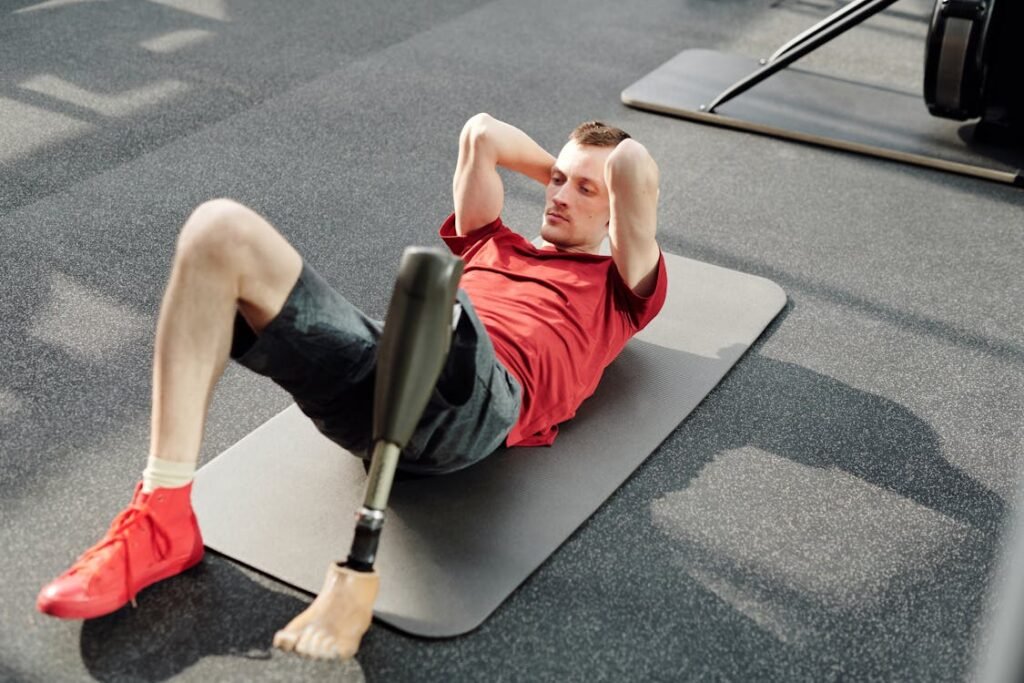
Managing Comfort and Preventing Fatigue
Adapting to a hemipelvectomy prosthetic is not just about movement—it’s also about making sure you stay comfortable and avoid unnecessary strain. Since this type of prosthetic supports a large portion of your body, taking care of your skin, muscles, and overall well-being is essential.
Ensuring a Proper Fit
A well-fitted prosthetic makes a huge difference in comfort. If the socket is too loose, it can cause instability, and if it’s too tight, it can lead to pressure sores. Since your body may change shape over time, periodic adjustments with your prosthetist will help maintain a snug but comfortable fit.
In the beginning, wearing your prosthetic for long hours may cause some discomfort. Slowly increasing the amount of time you wear it each day will help your body adjust without unnecessary strain. If you feel excessive rubbing, redness, or soreness, it’s important to address these issues early to prevent long-term discomfort.
Taking Care of Your Skin
Because the prosthetic socket wraps around your waist and torso, skin care is extremely important. Sweating, friction, and prolonged use can sometimes cause irritation. Keeping your skin clean and dry will reduce the risk of rashes or sores.
Using a mild, fragrance-free soap and drying your skin thoroughly before putting on your prosthetic can help prevent moisture buildup. Some people find that wearing a soft liner or compression garment under the socket reduces friction. If you notice any areas of irritation, applying a protective barrier cream can offer relief.
Checking your skin daily for signs of pressure sores or redness will help you catch small issues before they become serious. If irritation persists, your prosthetist may need to adjust the fit or recommend a different type of padding.
Managing Energy Levels
Using a hemipelvectomy prosthetic requires more energy than walking with two natural legs. Since your body compensates for the missing limb, fatigue can set in more quickly, especially in the beginning.
Planning your activities with rest breaks in mind can help prevent exhaustion. If you know you’ll be walking a lot during the day, balancing it with seated activities will help conserve energy. Over time, your endurance will improve, but listening to your body and pacing yourself is important.
Staying hydrated and eating a balanced diet also play a role in maintaining energy levels. Since your muscles are working harder to support movement, proper nutrition can help prevent fatigue and promote recovery.
Handling Phantom Limb Sensations
Even though the limb is no longer there, many people experience sensations in the missing leg, known as phantom limb sensations. These can feel like tingling, itching, or even pain. While this is a normal part of the adjustment process, it can sometimes be uncomfortable.
Massaging the area around your prosthetic socket, using warm or cool compresses, and practicing relaxation techniques can help reduce these sensations. If phantom pain becomes severe, talking to a doctor about possible treatments may be helpful.
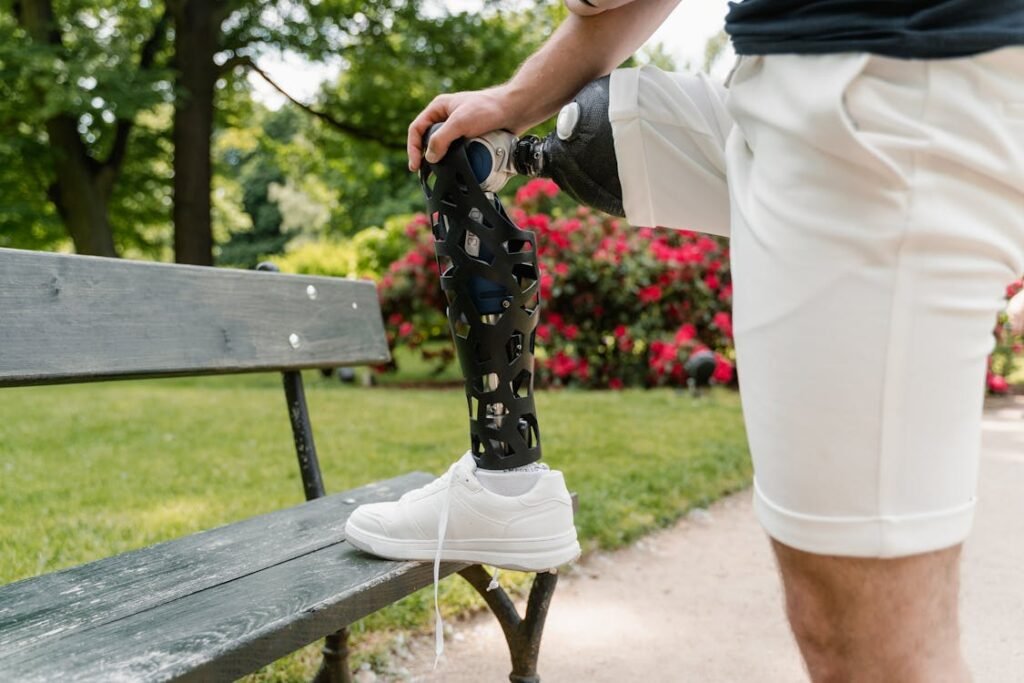
Building Confidence and Independence
Adjusting to life with a hemipelvectomy prosthetic is as much about mental strength as it is about physical adaptation. Confidence grows with time, and developing a mindset of independence will help you embrace your new lifestyle.
Overcoming Mental Barriers
In the beginning, it’s normal to feel overwhelmed. The changes in movement, appearance, and daily routine can feel like a lot to handle. But with patience and persistence, each step becomes easier.
One of the biggest mental shifts is accepting that things may take more effort than before, but that doesn’t mean they’re impossible. Instead of focusing on limitations, shifting your mindset to problem-solving will make a huge difference.
Setting small, achievable goals is a great way to build confidence. Whether it’s walking a little farther each day, mastering a new skill like driving, or simply getting through daily tasks more smoothly, celebrating progress will keep you motivated.
Finding Support in the Community
You’re not alone in this journey. Connecting with others who have undergone a hemipelvectomy or use similar prosthetics can provide valuable insight and encouragement. Support groups, online forums, and social media communities offer a space to share experiences, ask questions, and learn from others.
Talking to family and friends about your needs can also help make your transition easier. The people around you may not always know what kind of support you need unless you communicate it. Whether it’s asking for assistance with certain tasks or simply having someone to talk to, building a strong support system can make a difference.
Adapting to Work and Hobbies
Many people return to work after getting a hemipelvectomy prosthetic, but some adjustments may be necessary. If your job requires long periods of standing, using a high stool or taking periodic breaks can help manage fatigue. Desk-based work may require ergonomic seating for better posture and comfort.
If you enjoyed sports or hobbies before your surgery, finding adaptive ways to continue them can boost confidence. Activities like swimming, cycling with adaptive bikes, and even certain types of dancing can still be part of your life with the right approach. Exploring new hobbies that suit your mobility level can also open up new possibilities.
Embracing Independence
Independence doesn’t mean doing everything on your own—it means learning how to navigate the world in a way that works best for you. Whether that means using mobility aids when needed, making small modifications to your environment, or seeking help when necessary, the goal is to create a lifestyle that supports your well-being.
With time, movement will become more natural, routines will feel effortless, and confidence will grow. Each day brings new opportunities to adapt, learn, and reclaim your independence.

Traveling with a Hemipelvectomy Prosthetic
Exploring new places, whether for work, family visits, or leisure, is an important part of life. Traveling with a hemipelvectomy prosthetic requires some additional planning, but with the right approach, you can enjoy the journey without unnecessary stress.
Preparing for Air Travel
Flying with a prosthetic comes with unique considerations, but most airlines are accommodating when you communicate your needs in advance. Booking an aisle seat with extra legroom can make it easier to adjust your position during the flight.
When passing through airport security, you may be required to go through additional screening. Security personnel are trained to handle prosthetic users with care, but letting them know in advance can make the process smoother. If possible, arriving early will give you extra time to navigate security without feeling rushed.
Wearing comfortable clothing and ensuring your prosthetic is properly adjusted before the flight will help prevent discomfort. Since long flights can lead to stiffness, stretching and adjusting your position regularly will keep you comfortable.
Traveling by Car
Driving with a prosthetic is possible with the right modifications, but long road trips require extra planning. Taking breaks every couple of hours to stretch and adjust your prosthetic will help prevent soreness. If you’re traveling as a passenger, ensuring the seat has proper lumbar support can reduce strain on your lower back.
If your prosthetic causes discomfort after long periods of sitting, bringing a cushion or small pillow can provide extra support. Having easy access to water and snacks will also help maintain energy levels during the trip.
Choosing Accessible Accommodations
Hotels and rental properties vary in terms of accessibility, so checking ahead of time will help avoid unnecessary challenges. Asking about room layouts, available seating, and bathroom accessibility can make your stay more comfortable.
If you use a wheelchair or mobility aid in addition to your prosthetic, ensuring that doorways and hallways are wide enough for easy movement is important. Many hotels offer accessible rooms with grab bars in the bathroom and lower beds for easier transfers.
Exploring New Destinations
Whether you’re sightseeing in a city or exploring nature, planning ahead will make the experience more enjoyable. Checking whether tourist attractions, restaurants, and public transportation are accessible will help you avoid unexpected obstacles.
If walking long distances is tiring, renting a mobility aid such as a lightweight wheelchair or scooter can provide extra support. Many destinations offer accessibility services, so researching options before your trip will ensure a smoother experience.
Traveling with a hemipelvectomy prosthetic requires some extra thought, but it shouldn’t stop you from enjoying new experiences. With careful planning and the right mindset, you can continue exploring the world with confidence.
Conclusion
Adapting to life with a hemipelvectomy prosthetic is a journey that requires patience, persistence, and a willingness to learn. From mastering movement and building strength to navigating social situations and traveling, every step you take is a step toward independence.
At first, things may feel challenging, but with time, your prosthetic will become a natural part of your routine. Small adjustments, like ensuring a proper fit, managing energy levels, and finding the right support, will make a big difference in your comfort and confidence.
The key to success is consistency. Practicing daily activities, listening to your body, and making gradual progress will help you regain control over your life. Surrounding yourself with supportive people and staying open to new experiences will keep you motivated.
You are not defined by your prosthetic—you are defined by your resilience, determination, and the life you build for yourself. With the right mindset and tools, you can do more than just adapt—you can thrive.
If you’re considering a prosthetic or need support in your journey, Robobionics is here to help. Contact us today to explore the best prosthetic solutions for you.



